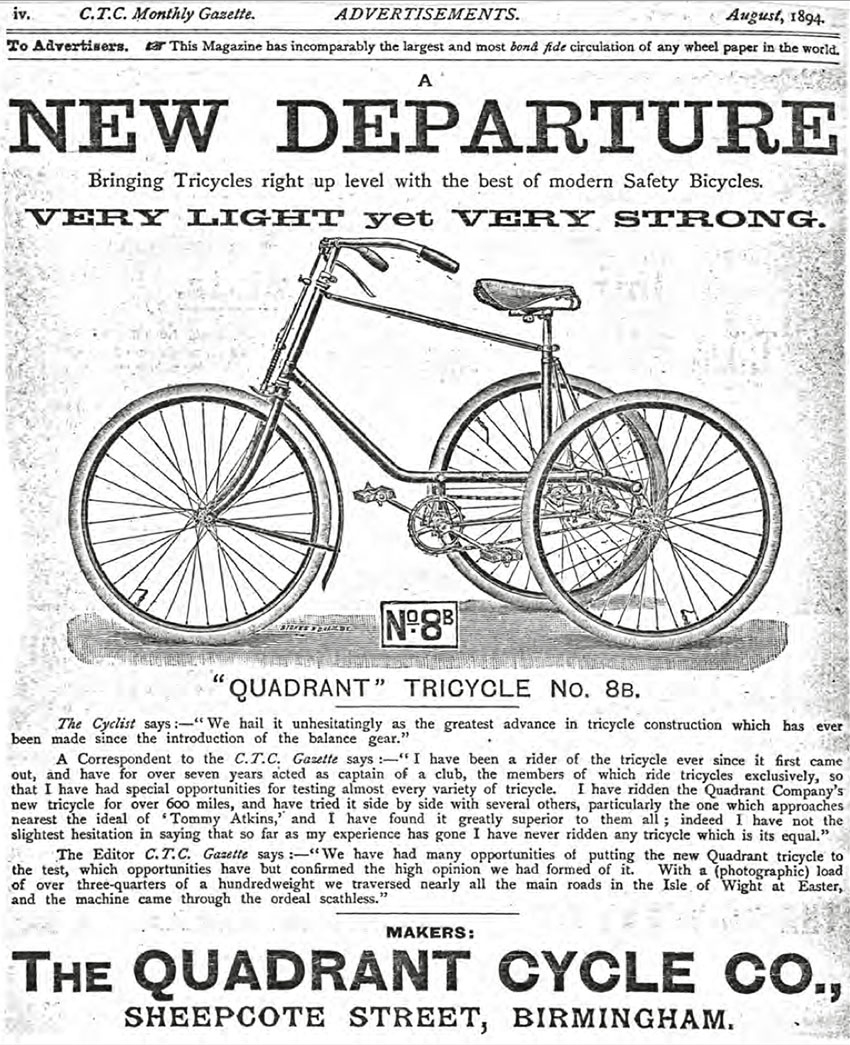

The tricycle market was very competitive during the ‘tricycle heyday’ of the 1880s and early 90s. While athletic tall gentlemen could ride an ordinary (penny farthing), the tricycle market catered for women and older gentlemen, as well as heavier riders. Quadrant’s 1901 catalogue points out that its ‘strength is ample for a heavy rider.’
Healthy sales in the tricycle market directly inspired advances in their design, which in turn led to the development of the safety bicycle. With the advent of chain-driven machines, tricycles became cheaper to produce, which widened their appeal, though they were still much more expensive than bicycles.
Founded in 1883, the Quadrant Cycle Co was renowned for the quality of their workmanship and was one of the world’s leading manufacturer of tricycles. They introduced many patents for new innovations. Introduced in 1894, the Quadrant Model 8B Gent’s Tricycle set the style for the new generation of tricycles and became was one of the most popular machines on the market. A Gentleman would mount the machine from the rear – observe the two ‘steps’ over the rear axle to protect its paintwork, embossed with the company name and address.
By 1901 the price of the Quadrant Model 8B Gent’s Tricycle was £25. A band brake, as fitted to the example here, cost an extra 12/- 6d. By comparison, Quadrant’s top-of-the-range two-wheeler was the Chainless Light Roadster which cost £19 10/-.
The Beeston Humber Convertible Tricycle was Quadrant’s main competitor, though that machine was more expensive, at £32.


1898 Quadrant Tricycle ‘No 8B’ with Band Brake
26″ Wheels
(Now sold)






1901 QUADRANT CATALOGUE




























CORRESPONDENCE: BRITISH & AMERICAN QUADRANT DEPOTS










































































